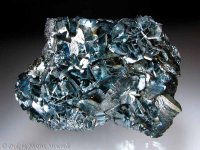itzyoboyandrew
Sr. Member
- May 13, 2015
- 492
- 422
- Primary Interest:
- All Treasure Hunting
Did some tests, it is thulium... thulium is worth 50$ per gram... BUT its not like gold and can take it to a pawn.. anyone know who or where i can sell it?
Just forget the BS tests. The only way to tell exactly what you have is with XRF (XRay Flourescence), Gas Chromatography, or Mass Spectroscopy. That will tell you every element (and in what quantities) that is in your sample.
Anything other than that is guesswork, and unless you are an accredited geologist, your guess as to what it is is not nearly worth $50 gram. Looks like Galena to me from the pic.
Mike

Since it is not naturally occuring in the pure form: first "they" are going to ask you where you came up with that much Thulium - did you rob a research lab or synthesize it yourself from the raw ore of Erbium or the much more hazardous Erbium Oxide?
Then "they" may ask if you have a facility that can heat the ore to 3,000°F or so in a centrifuge to purify it why you wouldn't already have a buyer in mind - as you are obviously running a sophisticated refinery.
Someone like Sigma-Aldrich (St. Louis, MO) may be interested in buying it if you can guaranty the purity.
And I won't even get into how you tested it - unless you have access to a gas spectrometer or chromatograph.
Water reactive could be Lithium, Sodium, Potassium, Rubidium, Cesium or Francium (the alkali metals). Or a chunk of boat zinc anode that has been made porous and had some salt build-up.
From your image and the "symptoms" I'm inclined to think it might be hematite with possibly some pyrite involved (that would react to "bubble" in water because it would produce hydrogen. If it gives a red streak test I'd say "solved". I sincerely do not believe it is an element, but a matrix. Get it to a geologist.
View attachment 1206614
Your density of 6.9 - what is the unit of measure? Are you using grams per cubic centimeter?
Alloys of antimony, tin and lead will melt under 900°F. Alloys of iron or copper won't.
Zamak 2 has a density of 6.8g/cm3 and is an alloy of aluminum, copper, magnesium, lead, cadmium, iron, and tin. It's used to die cast tools and machine mandrels and things like automotive castings. And there are seven different zamak compositions - and hundreds of similar alloys that all just look like cast metal.
And note that you can't add elemental densities together and average for the "alloy" density as the molecules arrange themselves in different "spaces". i.e. - rust (ferric oxide - Fe2O3) weighs more than iron and oxygen measured separately.
I worked at an iron and bronze foundry (Fairbanks Valve) but I can't look at a picture and tell the composition. Could be solder, white metal (pot metal), zamak or some Babbitt alloy of five or six different metals.